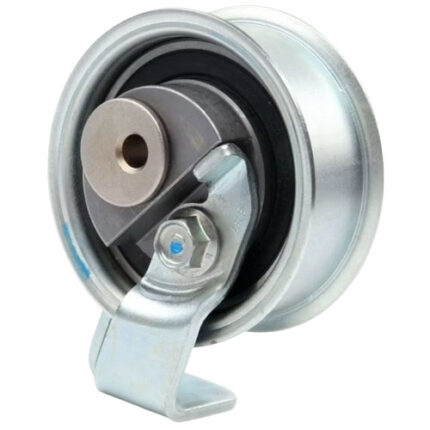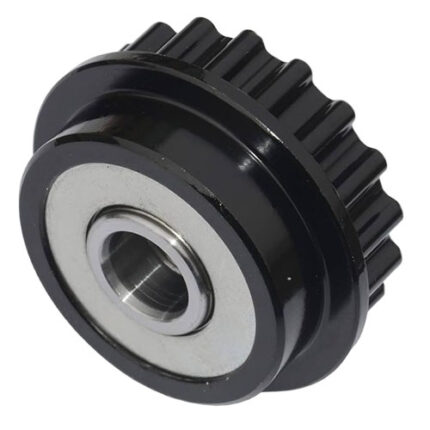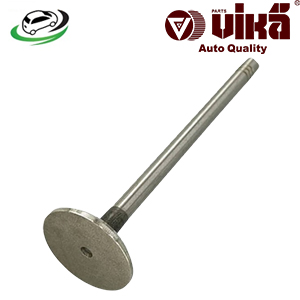-12%
Get Engine Exhaust Valve AUDI 8J TTRS/ A3 8P/ A3 8V/ A7/ B7 A4/ B7 RS4/ B8 A4/ VW EOS/ Golf R/ Golf V/ Golf VI/ Jetta V/ Passat B6 06D109611H
The engine exhaust valve is a crucial component of an internal combustion engine, playing a vital role in the engine’s operation and performance. It is one of the key elements in the engine’s valve train, responsible for controlling the release of exhaust gases from the combustion chamber after the fuel-air mixture has been ignited and burned. Understanding the function, importance, and maintenance of the engine exhaust valve is essential for anyone interested in automotive engineering or seeking to maintain their vehicle’s performance.
Function of the Engine Exhaust Valve
The engine exhaust valve’s primary function is to open at the right time to allow the burned exhaust gases to exit the combustion chamber. This process is part of the engine’s four-stroke cycle, which includes the intake, compression, power, and exhaust strokes.
- Intake Stroke: During the intake stroke, the intake valve opens, allowing the fuel-air mixture to enter the combustion chamber as the piston moves downward.
- Compression Stroke: The intake and exhaust valves are both closed during the compression stroke, allowing the piston to compress the fuel-air mixture.
- Power Stroke: Once the mixture is compressed, the spark plug ignites it, causing a powerful explosion that forces the piston downward, creating the power that drives the engine.
- Exhaust Stroke: After the power stroke, the exhaust valve opens, allowing the piston to push the burned gases out of the combustion chamber and into the exhaust manifold, from where they are expelled through the exhaust system.
The exhaust valve opens at precisely the right moment in the engine cycle, controlled by the camshaft. As the camshaft rotates, its lobes push against the valve lifters, rocker arms, or cam followers, causing the exhaust valve to open and close in synchronization with the engine’s other components. This precise timing ensures efficient engine operation and optimal performance.
Design and Construction of the Engine Exhaust Valve
The engine exhaust valve is typically made from heat-resistant materials such as stainless steel, nickel-based alloys, or even titanium in high-performance engines. This is because the exhaust valve is exposed to extremely high temperatures, often exceeding 1,200 degrees Fahrenheit (650 degrees Celsius), as it deals with the hot gases produced during combustion.
Key features of the exhaust valve design include:
- Valve Head: The valve head is the part of the valve that seals against the valve seat when closed. It is typically flat or slightly concave to improve the flow of exhaust gases when the valve is open.
- Valve Stem: The valve stem is the long, slender portion of the valve that extends into the cylinder head. It guides the valve’s movement as it opens and closes, sliding through a valve guide that ensures proper alignment.
- Valve Face: The valve face is the surface of the valve head that comes into contact with the valve seat. It is often coated or treated to resist wear and corrosion due to the harsh conditions inside the engine.
- Valve Seat: The valve seat is a hardened ring that is press-fitted into the cylinder head. It provides a surface against which the valve can seal when closed. The fit between the valve face and the valve seat is critical for maintaining compression and preventing leaks.
- Valve Spring: The valve spring is a coil spring that keeps the valve closed when it’s not being acted upon by the camshaft. The spring ensures that the valve remains in the closed position during the intake and compression strokes, and it helps the valve return to the closed position after opening during the exhaust stroke.
Importance of the Engine Exhaust Valve
The exhaust valve is crucial for the efficient operation of the engine. Its importance can be understood in several key areas:
- Engine Performance: Proper timing of the exhaust valve ensures that the engine operates efficiently. If the valve opens too early or too late, it can affect the engine’s ability to expel exhaust gases, leading to a loss of power, increased emissions, and poor fuel efficiency.
- Engine Cooling: The exhaust valve also plays a role in engine cooling. By allowing hot gases to escape from the combustion chamber, it helps to prevent overheating. A malfunctioning exhaust valve can lead to higher operating temperatures and potential engine damage.
- Emission Control: The exhaust valve’s timing and function are critical in controlling the amount of unburned fuel and other pollutants that exit the engine. Modern engines use sophisticated valve timing techniques, such as variable valve timing (VVT), to optimize the opening and closing of the exhaust valve, reducing harmful emissions.
- Engine Longevity: A properly functioning exhaust valve helps maintain the engine’s internal balance, reducing wear and tear on components. Valve-related issues can lead to premature engine wear, increased maintenance costs, and potentially catastrophic engine failure.
Common Problems with Engine Exhaust Valves
Despite their robust construction, engine exhaust valves can encounter several problems over time. Some of the most common issues include:
- Valve Burnout: The high temperatures and pressures inside the combustion chamber can cause the exhaust valve to burn or become damaged. Valve burnout often occurs due to improper sealing between the valve face and seat, leading to hot gases leaking past the valve and causing localized overheating.
- Valve Sticking: The exhaust valve can sometimes become stuck in the open or closed position due to carbon buildup, corrosion, or wear in the valve guide. A sticking valve can cause misfires, loss of power, and even engine damage if not addressed promptly.
- Valve Seat Recession: Over time, the constant pounding of the valve against the valve seat can cause the seat to wear down, leading to a poor seal. Valve seat recession is more common in older engines or those running on lower-quality fuels.
- Bent or Damaged Valves: The exhaust valve can become bent or damaged if it comes into contact with the piston, which can happen if the timing belt or chain fails, causing a loss of synchronization between the camshaft and crankshaft. Bent valves typically require a complete engine overhaul to repair.
- Valve Guide Wear: The valve guide, which ensures the valve moves smoothly within the cylinder head, can wear out over time. Excessive wear can lead to valve wobble, oil leakage into the combustion chamber, and reduced engine efficiency.
Maintenance and Repair of Engine Exhaust Valves
Proper maintenance of the engine exhaust valve is essential for ensuring the longevity and performance of the engine. Regular inspections and timely repairs can help prevent many of the common issues associated with exhaust valves.
- Regular Inspections: Periodic inspection of the valve train, including the exhaust valves, can help identify issues before they become serious. This may include checking for proper valve clearance, inspecting for signs of wear or damage, and ensuring the valve springs are in good condition.
- Valve Adjustment: Over time, the clearance between the valve stem and the rocker arm (or cam follower) may need adjustment to compensate for wear. Incorrect valve clearance can lead to poor engine performance and increased wear on the valve train components.
- Carbon Cleaning: Carbon deposits can build up on the valve face, seat, and stem, leading to poor sealing and sticking. Regular carbon cleaning, either through chemical additives or manual cleaning during engine service, can help maintain proper valve function.
- Valve Replacement: If an exhaust valve becomes damaged or excessively worn, it will need to be replaced. This often requires removing the cylinder head and may involve replacing the valve seat or guide as well.
- Timing Belt/Chain Maintenance: Ensuring the timing belt or chain is in good condition and properly tensioned is critical to preventing catastrophic valve damage due to timing issues. Regular replacement of these components according to the manufacturer’s schedule is essential.
- Use of High-Quality Fuels and Oils: Using high-quality fuels and oils can help reduce the formation of carbon deposits and ensure proper lubrication of the valve train components, extending the life of the exhaust valves.
Follow us on Facebook for more parts.



